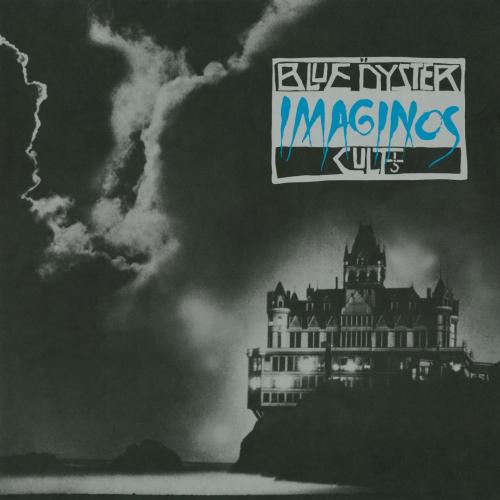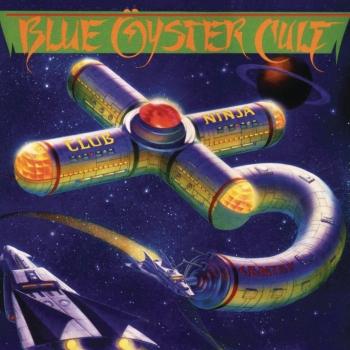
Imaginos (Remastered) Blue Oyster Cult
Album Info
Album Veröffentlichung:
1988
HRA-Veröffentlichung:
27.09.2021
Das Album enthält Albumcover
Entschuldigen Sie bitte!
Sehr geehrter HIGHRESAUDIO Besucher,
leider kann das Album zurzeit aufgrund von Länder- und Lizenzbeschränkungen nicht gekauft werden oder uns liegt der offizielle Veröffentlichungstermin für Ihr Land noch nicht vor. Wir aktualisieren unsere Veröffentlichungstermine ein- bis zweimal die Woche. Bitte schauen Sie ab und zu mal wieder rein.
Wir empfehlen Ihnen das Album auf Ihre Merkliste zu setzen.
Wir bedanken uns für Ihr Verständnis und Ihre Geduld.
Ihr, HIGHRESAUDIO
- 1 I Am the One You Warned Me Of 05:03
- 2 Les Invisibles 05:32
- 3 In the Presence of Another World 06:26
- 4 Del Rio's Song 05:34
- 5 The Siege and Investiture of Baron von Frankenstein's Castle at Weisseria 06:43
- 6 Astronomy 06:26
- 7 Magna of Illusion 05:54
- 8 Blue Öyster Cult 07:18
- 9 Imaginos 05:46
Info zu Imaginos (Remastered)
Imaginos is the eleventh studio album by the American hard rock band Blue Öyster Cult. It was released in 1988, and was their last recording with their original record label, CBS/Columbia Records.
The album took nearly eight years to complete and was originally intended to be the first in a trilogy of solo albums by Blue Öyster Cult drummer and songwriter Albert Bouchard. Bouchard was fired in August 1981, and CBS rejected the album in 1984, but a re-worked version was eventually published as a product of the band. Many guest musicians contributed to the project over this eight-year span, including Joe Satriani, Aldo Nova, and Doors guitarist Robby Krieger, but some band members were barely involved in the recording process. Thus, Imaginos is often considered more as a project of producer and lyricist Sandy Pearlman than as a true album of the band.
Imaginos weaves scripts and poems by Pearlman, dating from the second half of the 1960s, into a concept album and rock opera about an alien conspiracy that is brought to fruition during the late 19th and early 20th century through the actions of Imaginos, an agent of evil. The tale combines elements of gothic literature and science fiction and is strongly inspired by the work of H. P. Lovecraft. Subtitled "a bedtime story for the children of the damned", it has an intricate storyline whose often-obscure lyrics contain many historical references, prompting speculation by fans and critics. It is often considered one of the heaviest albums released by Blue Öyster Cult, its music more akin to heavy metal than the melodic and commercial hard rock of their two previous works. The poor sales of those albums resulted in record label pressure on the band that led to their disbandment in 1986; a subsequent comeback featured only three members of the classic line-up.
The album received some critical acclaim, but was not a commercial success, and Columbia Records ended their contract with Blue Öyster Cult at the completion of the Imaginos Tour. Albert Bouchard, excluded from the recording progress of Imaginos after the initial rejection from Columbia Records, then took legal action against the band and the label to protect his rights as author and producer on the album. Blue Öyster Cult continued to perform and remained a live attraction, but ten years passed before they released an album of new songs.
"Blue Öyster Cult went out with a bang as a major-label recording act on their 14th and last new Columbia album, Imaginos. The idea for this concept album came as early as Secret Treaties, on which some of its music appeared, and the recording took place over a six-year period. (As a result, album credits give the erroneous impression that the original band had reformed.) The story line, which is easier to appreciate in the liner notes than on the record, concerns a mysterious, protean 19th century figure who has a talent for turning up at key moments in history and influencing them for the worse. This is perhaps BÖC's most consistent album, certainly its most uncompromising (none of its usual nods to pop accessibility), and also the closest thing to a real heavy-metal statement from a band that never quite fit that description. Unfortunately, this ambitious work came out as BÖC was dropping out of the frontline of the music business, so the album that comes closest to defining Blue Öyster Cult turned into its creative swan song." (William Ruhlmann, AMG)
Blue Öyster Cult
Digitally remastered
Blue Öyster Cult
Spanning three decades, Blue Öyster Cult has a long and storied history. The band got its start in the late ’60s on Long Island, New York, as the Soft White Underbelly, but each member had been involved in bands previously in high school and college, before ending up in the “right place at the right time” to create the beginnings of Blue Öyster Cult.
The threads that eventually wove together to create Blue Öyster Cult got their start in upstate New York.
Long Island native Donald Roeser and Albert Bouchard (of Watertown, New York) met at Clarkson College, in Potsdam, NY. The two were introduced by a mutual friend, Bruce Abbott (who later co-authored “Golden Age of Leather” with Donald). With Abbott and two other friends, they formed “The Disciples” and played college parties and local beer halls. The next year, the band reformed and played the same circuits as “Travesty” (named after the Blues Project album). Through all this, their studies fell by the wayside, and both Albert and Donald decided to quit college to concentrate on playing music full-time.
Eventually “Travesty” broke up, Donald and Albert took seperate paths for a while. Donald went back to Long Island, and Albert took a musical opportunity in Chicago. After moving there, though, the band fizzled, and Albert returned to NY and joined Donald. In the meantime, Donald had been jamming with local musicians, and had met a person that would become very influential in their future: Sandy Pearlman.
Sandy Pearlman became interested in rock music around the time of the British Invasion, and was a pioneering voice of rock criticism, opening a new field for creative writers like Lester Bangs. Both Pearlman and his friend Richard Meltzer were contributors for seminal magazine “Crawdaddy!,” the first magazine that dedicated itself to analysis of rock music and its culture.
Allen Lanier came into the fold by way of guitarist John Wiesenthal. Allen had accepted employment at a film company at which Wiesenthal was also an employee. After becoming acquainted, Wiesenthal invited Allen out to Long Island to meet and jam with the loose group of musicians he played with, and Allen began to regularly jam with them.
An old house near Stony Brook College became ground zero for the formative band, and casual jams with whomever happened to be hanging around began to turn into rehearsals with a core band, which included Wiesenthal, Donald, Albert, Allen and Andrew Winters, a school friend of Donald. It was 1967.
Pearlman (along with Meltzer and Wiesenthal) had been a student at Stony Brook, and was becoming increasingly involved in the music scene. When he heard the formative combo, he instantly recognized the talent at work. He had an idea for a band, and thought that this group of musicians had the chops to put that idea into play. The musicians saw that Pearlman’s contacts and stature in the local (and increasingly national) scene could help them spawn a career as well, and an alliance was formed.
Dieses Album enthält kein Booklet






















